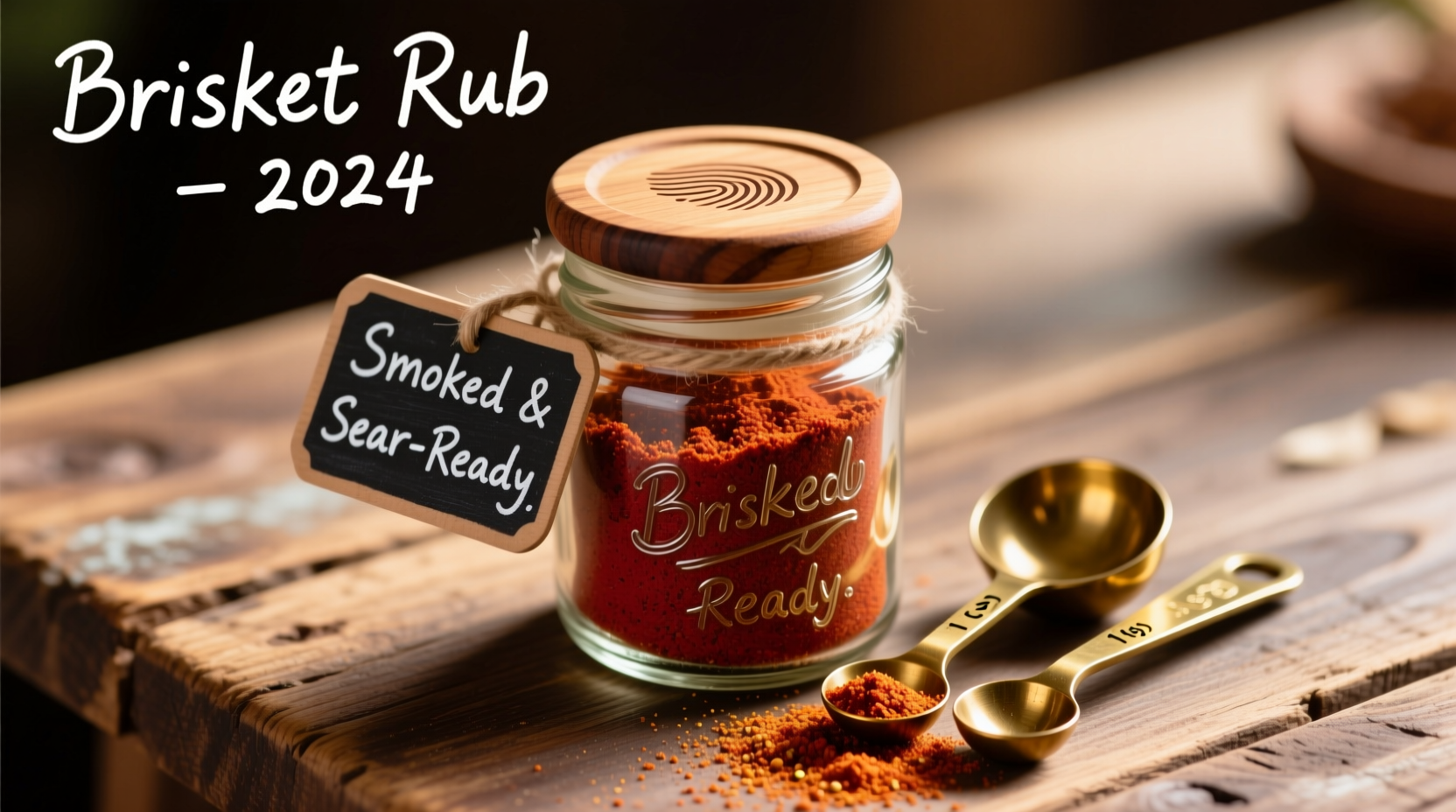Creating an exceptional spice rub for brisket isn't just about mixing ingredients—it's understanding how each component interacts with beef's fat content and reacts to low-and-slow cooking. After decades of perfecting Texas-style barbecue, I've discovered that the right rub transforms ordinary brisket into a masterpiece with complex layers of flavor and that coveted mahogany bark.
Why Your Brisket Rub Matters More Than You Think
Brisket's high fat content and dense muscle structure require a rub that can both penetrate and protect during the 10-14 hour smoking process. Unlike other cuts, brisket needs a rub that creates a flavor barrier while allowing smoke absorption. The salt in your rub draws out surface moisture, enabling the Maillard reaction that forms that essential bark—without it, you'll end up with gray, boiled-looking meat.
| Core Spice | Function | Optimal Ratio |
|---|---|---|
| Kosher salt | Moisture control, bark formation | 1 part |
| Coarse black pepper | Heat, complexity | 1 part |
| Garlic powder | Umami foundation | 0.5 part |
| Paprika | Color, subtle sweetness | 0.25 part |
The Science Behind Effective Brisket Rubs
Understanding how spices behave during the smoking process separates good barbecue from extraordinary. When applied properly, salt begins osmosis within minutes, drawing out moisture that then dissolves the rub components. This creates a slurry that penetrates the meat's surface. As cooking progresses, the rub transforms through three critical phases:
- Moisture phase (0-2 hours): Salt dissolves, beginning penetration
- Drying phase (2-6 hours): Surface dries, forming initial bark
- Development phase (6+ hours): Complex Maillard reactions create deep flavor
According to research from the USDA National Institute of Food and Agriculture, the ideal particle size for barbecue rubs ranges between 0.5-1.5mm—large enough to create texture but small enough to adhere properly. Finer grinds can burn, while coarser blends won't adhere well.

Building Your Foundation Rub
Start with this professional foundation that works for all brisket styles:
- ¼ cup coarse kosher salt (Diamond Crystal)
- ¼ cup coarse ground black pepper
- 2 tablespoons garlic powder
- 2 tablespoons paprika (not smoked)
Mix thoroughly in a glass bowl—metal can impart flavors. For best results, toast whole peppercorns in a dry skillet over medium heat for 2-3 minutes before grinding. This simple step enhances volatile compounds by up to 30% according to flavor chemistry studies from the Institute of Food Technologists.
Regional Variations That Actually Work
While Texas-style brisket traditionally uses a simple salt-and-pepper "Dalmatian" rub, regional adaptations can enhance your barbecue experience when applied thoughtfully:
- Texas Heritage: Stick to 50% salt, 50% coarse pepper (no garlic or paprika)
- Central Texas Twist: Add 1 tablespoon onion powder to the foundation rub
- KC Style: Include 2 tablespoons brown sugar for caramelization
- Sugar-Free Option: Replace sugar with 1 tablespoon ground cumin for depth
Important context: Sugar-based rubs work best at temperatures below 225°F. Above this threshold, sugar burns rather than caramelizes. For competition-style cooking at higher temperatures, eliminate sugar entirely.
Application Techniques That Make the Difference
How you apply your rub matters as much as the ingredients:
- Timing: Apply rub at least 12 hours before cooking (24 hours ideal)
- Amount: Use 1 tablespoon of rub per pound of raw brisket
- Method: Press (don't rub) the seasoning into the meat surface
- Resting: Refrigerate uncovered after application to dry the surface
Professional pitmasters use the "hand test" to determine proper coverage: after application, the brisket should look like "black velvet" with no visible raw meat, but not have excess rub accumulating in the fat pockets.
Avoid These Common Rub Mistakes
Even experienced grillers make these critical errors:
- Applying too little rub: Results in uneven bark formation
- Using fine table salt: Over-penetrates and creates overly salty meat
- Adding rub immediately before cooking: Prevents proper moisture management
- Pressing too hard: Damages meat fibers and forces rub too deep
- Using pre-mixed "steak" seasonings: Typically too fine and contain anti-caking agents
Storage and Shelf Life Guidelines
Homemade rubs maintain peak flavor for different durations depending on ingredients:
- Basic salt/pepper/garlic/paprika blend: 6 months in airtight container
- Rubs containing sugar: 3 months (sugar attracts moisture)
- Rubs with dried herbs: 2 months (herbs lose volatile compounds)
- Rubs with citrus zest: Use immediately (zest oxidizes quickly)
Store your rub in a cool, dark place—never above your stove where heat degrades flavor compounds. For competition-grade consistency, label containers with creation dates and test small batches before using on important cooks.
Final Tips for Rub Success
Remember that your brisket rub is just the beginning of flavor development. The real magic happens when the rub interacts with smoke, fat rendering, and the meat's natural enzymes during the long cooking process. Keep notes on your rub applications—what works for a Wagyu brisket might overwhelm a standard Choice grade cut. And most importantly, trust your senses over rigid recipes; if your rub looks right and smells balanced, you're on the path to exceptional barbecue.











 浙公网安备
33010002000092号
浙公网安备
33010002000092号 浙B2-20120091-4
浙B2-20120091-4